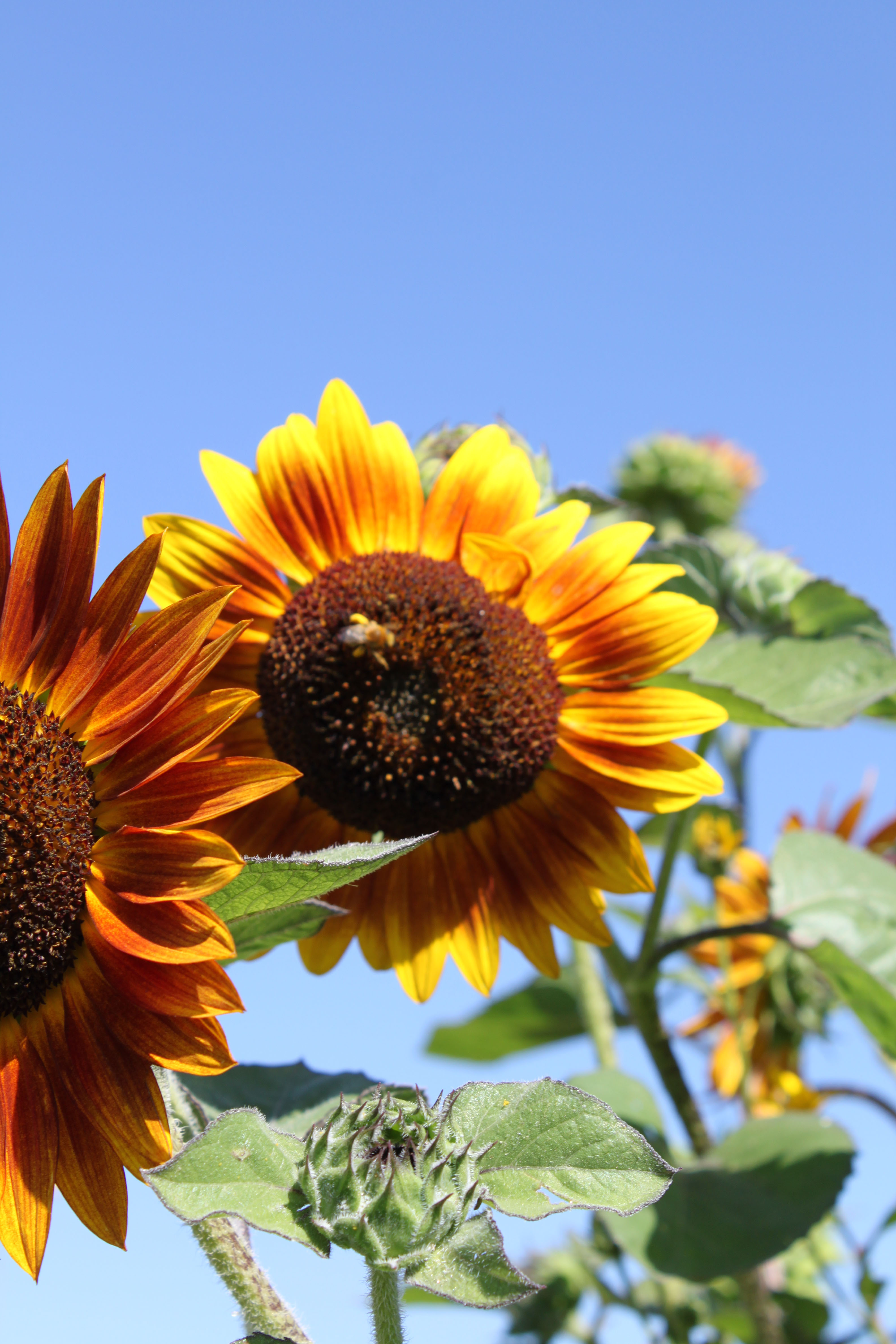There is just something about August that brings sunflowers to mind.
It could be that they are blooming in the neighbor's yard and grow with abandon along roadside ditches.
Or it could be their cheerful, bright faces turned upward to the sun, reminding me to do the same.
According to the National Sunflower Association website, sunflowers are native to North America, found commercial success in Russia, and only in more recent years returned to North America as a crop.
Native Americans first domesticated the plant into a single headed plant with a variety of seed colors including black, white, red, and black/white striped.
Some archaeologists suggest sunflowers were domesticated before corn, cultivated by Native Americans as far back as 3000 BC in present-day Arizona and New Mexico.
Tribes used the seed to grind or pound into flour. Some mixed the meal with vegetables such as beans, squash, and corn. The seed was also cracked and eaten as a snack. References note squeezing the oil from the seed and using it in making bread.
Non-food uses include dye for textiles and decorations. Parts of the plant were used medicinally for a variety of purposes, ranging from ointments to treatment for snakebite. The plants and seeds were used in ceremonies, and dried stalks could be used in building material..
Spanish explorers reportedly took sunflowers with them to Europe around 1500. It became widespread throughout present-day Western Europe, mainly as ornamental, but with some medicinal uses. An English patent in 1716 was grated for squeezing oil from sunflower sees.
By 1830, sunflower oil was manufactured on a commercial scale. The Russian Orthodox Church inadvertently increased the popularity of sunflower oil when it forbade moist oil foods from being consumed during Lent. Sunflowers were not on the list, and the oil could be used.
Russian farmers were growing more than two million acres of sunflowers by the early 1800s. Two specific uses emerged for sunflowers: oil production, and direct human consumption.
Russian sunflower seed found its way to the United States in the late 1800s. By 1880, seed companies advertising the "Mammoth Russian" sunflower seed in their catalogs. The seed name was still being used in the 1970s!
The first official government sunflower breeding program began in Canada in the 1930s. The plant breeding material came from Russian immigrant gardens. Acreage spread because of demand, and soon spread into Minnesota and North Dakota.
Acreage in the late 1970s escalated in the U.S. Due to strong European demand for sunflower oil, more than five million American acres were dedicated to growing sunflowers. Today, the demand has drastically decreased for the US to export to Europe.
And here I was just admiring how pretty the flowers looked.
Are you a fan of sunflowers?
USA Today Bestselling Author Shanna Hatfield grew up on a farm where her childhood brimmed with sunshine, hay fever, and an ongoing supply of learning experiences.
Shanna creates character-driven romances with realistic heroes and heroines. Her historical westerns have been described as “reminiscent of the era captured by Bonanza and The Virginian” while her contemporary works have been called “laugh-out-loud funny, and a little heart-pumping sexy without being explicit in any way.”
When this award-winning author isn’t writing or testing out new recipes (she loves to bake!), Shanna hangs out at home in the Pacific Northwest with her beloved husband, better known as Captain Cavedweller.








No comments:
Post a Comment